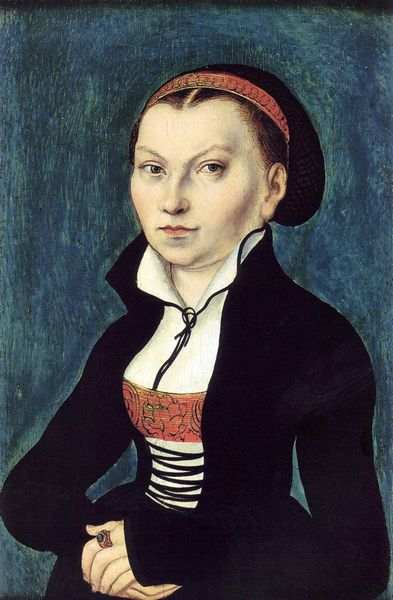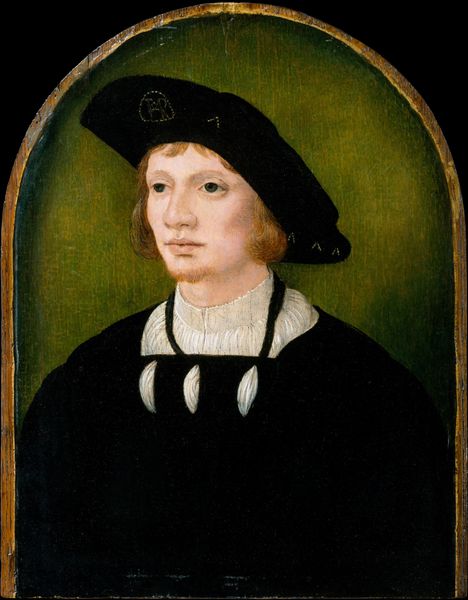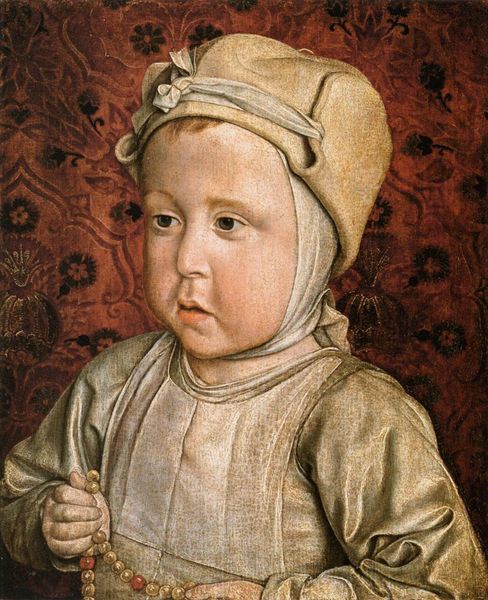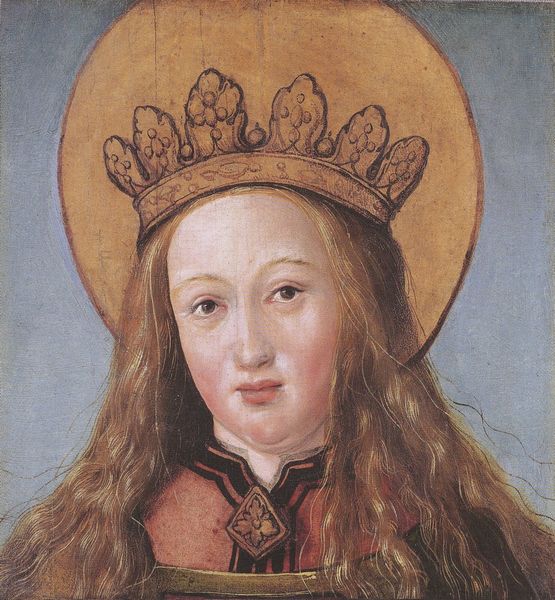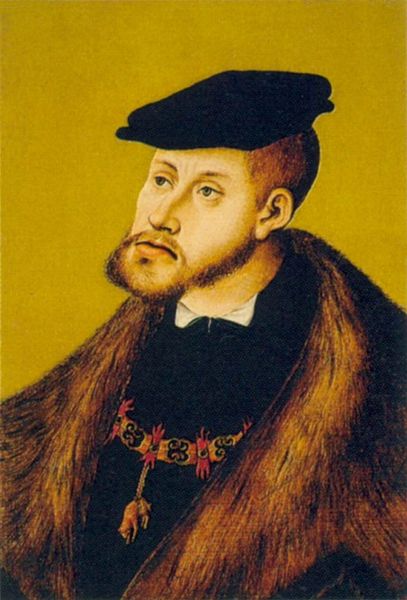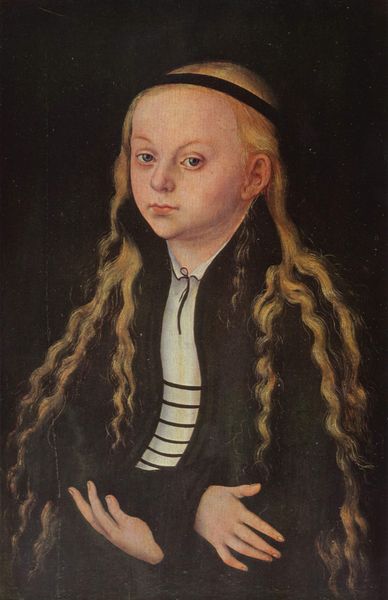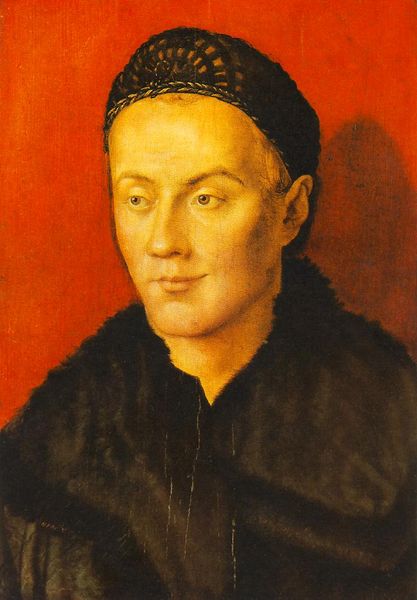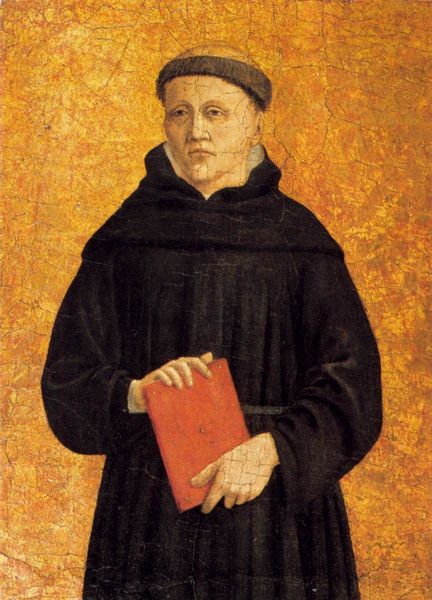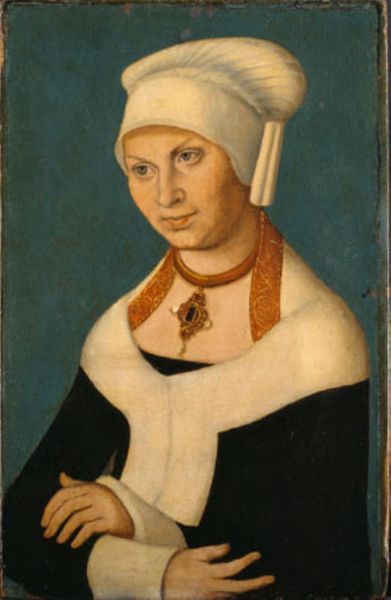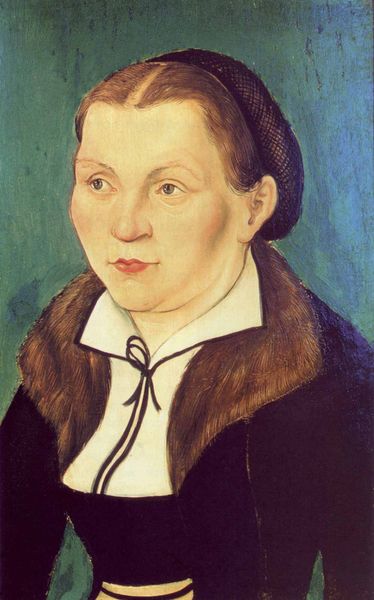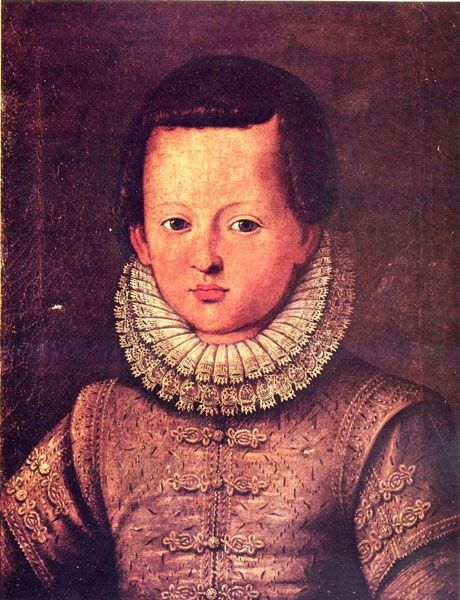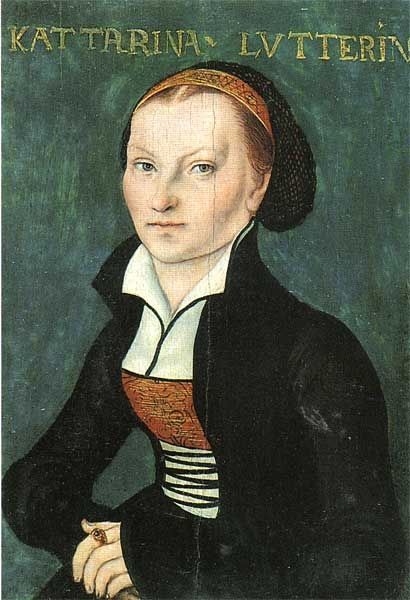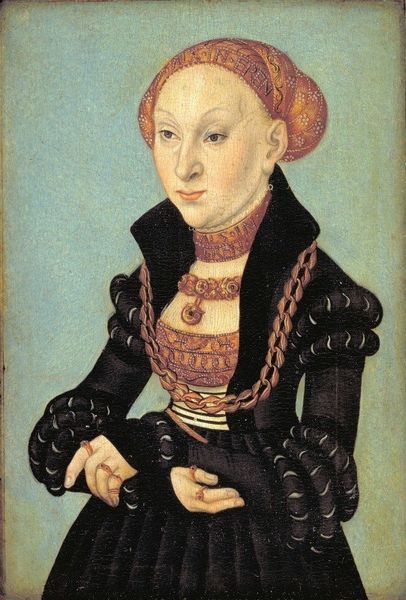
painting, oil-paint
portrait
painting
oil-paint
figuration
history-painting
northern-renaissance
realism
Dimensions: 24.9 x 38.2 cm
Copyright: Public domain
Curator: Here we have Lucas Cranach the Elder's portrait of "Katharina Luther," painted in 1529, now residing at Friedenstein Castle in Gotha, Germany. Editor: She has an arresting gaze. The fur looks heavy, almost stifling. Curator: Indeed. Cranach was a court painter closely associated with the Reformation, and this portrait served a very specific public role. It legitimizes Katharina as the wife of Martin Luther, an important figure, establishing a visual representation of the Protestant family ideal. Editor: I'm struck by the textures—the delicate rendering of the fur against the smoothness of her skin. Do we know what kind of oil-paint was available at the time? Pigment choices say so much about trade routes and accessibility, even the quality of light available. Curator: Those materials would have been increasingly accessible due to expanding trade networks. However, beyond mere material availability, think about the political messaging at play. These portraits were carefully commissioned to craft and disseminate a particular image, a family devoted to reform. Editor: Right, it’s about what’s *on* the surface. But consider what it *took* to produce this image – the labor in creating pigments, preparing the wood panel. Cranach had assistants surely? It's rarely about a lone genius. Curator: Agreed, a workshop environment no doubt existed. What's key here is how this image functions within a broader historical context. Look at the stark simplicity, so different from ornate Catholic imagery; it's a deliberate rejection of papal excess and a call for more honest devotion. Editor: I wonder what quality brushes he used. Look closely at her eyes. Such detail comes with using excellent instruments! Did this also serve to portray Katharina’s actual role as the manager of their household? Curator: Perhaps implicitly. What cannot be understated is how this image, and others like it, were deployed. Reproductions circulated widely, solidifying Luther’s legacy and influencing societal attitudes toward family, religious reform, and womanhood itself. Editor: All those repeated brushstrokes serving more than art's sake indeed. I walk away thinking of everything and everyone involved in constructing such a lasting artifact. Curator: For me, I see the quiet power of the painting acting within the storm of Reformation, visually reinforcing an idea that resonated through centuries.
Comments
No comments
Be the first to comment and join the conversation on the ultimate creative platform.
